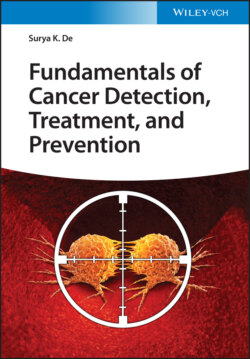Читать книгу Fundamentals of Cancer Detection, Treatment, and Prevention - Surya K. De - Страница 72
2.10 Role of Radiation on Cancer
ОглавлениеRadiation of certain wavelengths, called ionizing radiation, has enough energy to damage cellular DNA and thereby cause cancer. Examples of ionizing radiation are radon, X‐rays, gamma rays, alpha particles, beta particles, and solar ultraviolet (UV) rays (discussed next). Although X‐rays are frequently used for diagnostic purposes in humans, the amount of exposure from them is not considered enough of the cancer risk to justify avoiding routine X‐ray screenings for potentially more life‐threatening conditions (Figure 2.9). The studies demonstrating the association between radiation and cancer tend to involve extremely high exposure levels, like those in a nuclear disaster, or the intense radiation sometimes needed to treat people who already have cancer. Nevertheless, the American Cancer Society cautions that “there is no threshold below which this kind of radiation is thought to be totally safe.”
Figure 2.9 Role of radiation on cancer.
Source: Image Supply Co/Adobe Stock
.
Visible light and the energy from cell phones and electromagnetic fields are lower‐energy, nonionizing forms of radiation. They do not affect DNA and have not been linked to developing cancer.
